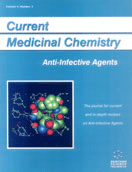Abstract
This review deals with the discovery of inhibitors of picornavirus replication. These inhibitors originated from 1,3-diketone compounds as juvenile hormone mimetics. One aspect of discovering these inhibitors relied on the x-ray crystallography structure of human rhinovirus-14 and understanding the binding of inhibitors to this virus. The binding site occupied a portion of the capsid protein, referred to as the canyon, leading to a hydrophobic pocket. A series of substituted oxazolines provided the initial series amenable for optimization. This series lead first to disoxaril which was clinically evaluated. Subsequently, WIN 54954 was identified as having broader spectrum of antiviral activity. Clinically, this compound was not effective against rhinovirus 28 and 29 and was extensively metabolized in humans. The medicinal chemists addressed these issues which resulted in improvements on WIN 54954 and eventually led to WIN 63843 (Pleconaril). This compound had an impressive profile with activity against one hundred rhinovirus serotype in vitro, as well as, clinical isolates and good pharmacokinetic property. Based on these results, pleconril was evaluated clinically. This review illustrated good collaboration between medicinal chemists and x-ray crystallographers that lead to the design of potent inhibitors. It also demonstrates the utilization of understanding pharmacokinetic properties needed to achieve desired properties of the inhibitors.
Keywords: picornavirus, picornavirus replication, 1,3-diketone compounds, juvenile hormone mimetics, win54954
 13
13

